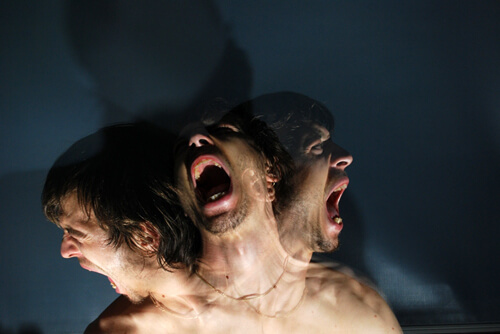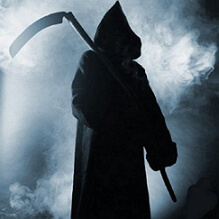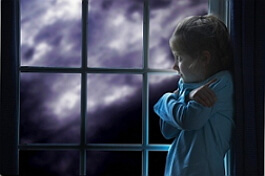Paranoid schizophrenia
 Paranoid schizophrenia refers to one of the types of schizophrenia, which is characterized by the domination of hallucinations, as well as delirium, affective flattening, speech rupture, and light catatonic symptoms.
Paranoid schizophrenia refers to one of the types of schizophrenia, which is characterized by the domination of hallucinations, as well as delirium, affective flattening, speech rupture, and light catatonic symptoms.
What are hallucinations? This is a violation of the perception of our world through meaningless chatter, nonsense, and also unrealizable dreams. In the person's mind, an irrelevant image arises to the external irritant. The peculiarities of the appearance of hallucinations are chronic fatigue, a search for psychotropic drugs, psychosis, neurosis.
What is delirium? Delirium is a collection of ideas, as well as representations that do not correspond to reality, distort it and are not at all amenable to correction. Delirium, as well as crazy ideas completely mastered by consciousness and differed in violation of logical thinking. There are two types of delirium. For the primary is characterized by the impossibility of comprehension and the concept of the patient's medical history. With secondary delirium, the emergence of this condition becomes psychologically clear, since symptoms of schizophrenia, psychosis or manic-depressive psychosis are manifested.
Paranoid schizophrenia is the most common type among the population in both women and men. Great and many famous people suffered from this disease. This is an American mathematician John Forbes Nash, American professional football player Lionel Aldridge, American singer James Chassie, Indian actress Parvin Babi and others. A distinctive feature of paranoid schizophrenia is the presence of paraphrenic delusions or paranoid( paranoid) type of delirium
Paranoid schizophrenia - causes of
Disruption in thinking processes resulting in distorted perception of the world, as well as paranoid behavior leads to the onset of
disease Paranoid schizophrenia - symptoms
The disease is characterized by such symptoms, As auditory pseudo-hallucinations and a sense of transmission, as well as suggestion of a sick mind at a distance. These hallucinatory voices comment or discuss the patient's behavior, and the patient feels a voice coming from different parts of the body.
Symptoms of paranoid schizophrenia are distinguished by delusional perception, delusions of mastery, and effects;Sense of already carrying out their own movements, thoughts, actions and sensations.
Symptoms are resistant to their delusional ideas and often they are culturally inadequate, impossible, ridiculous, and also fantastic in their content. The diagnosis itself is made with the duration of the symptomatology more than a month and the mandatory presence of two symptoms, from the following:
- obsessive, overvalued and persistent ideas;Persistent hallucinations along with delirium, but without emotional excitement( affect);
- the presence of neologisms, the severance of speech, violation of the flow of thoughts;
- catatonic disorders, which are characterized by excitation, congealing, as well as waxy flexibility;Mutism, manifested in a steady silence;Stupor, negativism;
- changes in general behavior, manifested by aimlessness of existence, loss of interests, withdrawal into one's own experiences, social autism;
- negative symptoms - Asperger syndrome manifests itself in social isolation, in social unproductive;Depression, apathy, poverty, as well as inadequate emotional reactions
Signs of paranoid schizophrenia
The domination of delusional as well as hallucinatory phenomena, including all kinds of delirium, taste, smell. Catatonic symptoms( disorders in movement), synaesthesia, inadequate affect, in mild form of speech rupture.
Paranoid schizophrenia can be manifested by excessive religiosity.
The signs of paranoid schizophrenia also include types of delirium, which are subdivided into: delusions of jealousy, delusions of persecution, messianic delirium, delirium of high origin, delusions of influence, values, attitudes;Delusions of bodily changes. Such delusional attitudes have either an acute occurrence, as a finding of insight, and perhaps a gradual appearance in the reorganization of the personality.
At the clinic, emotional inadequacy, as well as catatonic symptoms, should not dominate.
Paranoid schizophrenia is also distinguished by flow variants: continuous flow;Episodic, flowing with a stable defect;During an episodic remission;Flow with increasing defect
Paranoid schizophrenia - treatment
The final diagnosis is set by the doctor after a complete clinical examination, as well as confirmation of symptoms( criteria).
The treatment of paranoid schizophrenia is prescribed by a psychiatrist who is directed at suppressing dopaminergic activity in the brain. Widely used and used in the treatment of psychotropic medications group of neuroleptics, for example, the drug Carbidine and others. Their main goal is to eliminate productive symptoms. Effective in the treatment and electroconvulsive therapy, as well as according to the indications of the doctor insulin.
A huge role is assigned to the importance of social adaptation for the sick. This help should be actively offered by relatives and colleagues, and remember that no one is immune from this diagnosis. According to statistics, every hundredth person suffers from schizophrenia.



